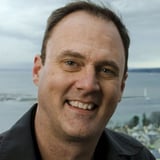Summary
Many organizations struggle with justifying and prioritizing accessibility. One of the primary reasons is because they’re thinking about accessibility all wrong. Instead of a checklist, a list of legal requirements, or a set of shackles holding designers and developers back, it’s time to start thinking of accessibility as what it is: an opportunity to innovate! In this presentation, Fable will draw from our expertise helping organizations like yours start the accessibility journey, to change the way you think about disability, assistive technology, and accessibility. We will demonstrate that accessible products are more flexible, customizable, and useful for all users. We’ll also show you how accessibility is directly tied to the creation of many of the most exciting and innovative technologies of the last 50 years, and how it’s changed the entire world for everyone. This presentation will inspire you with the information and ideas you need to accelerate your accessibility journey.
Key Insights
-
•
Many everyday features like dark mode, voice assistance, and captions began as accessibility innovations designed for people with disabilities.
-
•
Accessibility should be understood broadly to include permanent, temporary, and situational disabilities, including the effects of aging.
-
•
One in five people currently live with a disability, making accessibility a concern for a significant portion of users.
-
•
Common myths hold that new design paradigms or complicated systems can't be made accessible, but history proves otherwise.
-
•
Accessibility requires flexible, customizable designs rather than simplified, limited versions to serve diverse user needs.
-
•
Designing for edge cases in accessibility often results in better experiences for the majority of users as well.
-
•
Diverse teams are essential to understanding a wide range of needs and creating inclusive, innovative products.
-
•
Accessibility is not a checklist but a continuous journey involving real user feedback and iterative improvements.
-
•
Retrofitting accessibility late in product development is costly and difficult; early integration yields better outcomes.
-
•
Providing accessible, easy-to-use feedback channels for customers with disabilities is critical to discovering usability barriers.
Notable Quotes
"Everyone already uses accessibility features whether you have a disability or not."
"Accessibility features like voice assistants and captions make the world better for everyone, not just people with disabilities."
"Disability isn't rare; one in five people have a disability right now."
"Accessibility requires flexible designs, not limited or simplified ones."
"When you design for the edges, you get the middle for free."
"It is very easy to tick all the accessibility checkboxes and still have a poor, ugly, and unhelpful product."
"Retrofitting accessibility at a later date is difficult, costly, and demoralizing."
"Accessibility is not a single project, it’s a journey that requires continuous iteration and improvement."
"Diverse teams build diverse products that work for more people."
"If your company has customers with disabilities but no way to collect their feedback, you’re missing critical insights."
Or choose a question:















More Videos

"I underestimated how much identity our team tied to UX and how scary that loss felt to many of them."
Nalini KotamrajuResearch After UX
March 25, 2024

"Constraints can channel focus, but being stuck in them limits potential."
Dean BroadleyNot Black Enough to be White
January 8, 2024

"I appreciate your allyship when I'm in the room, but I appreciate it more when I'm not in the room."
Denise Jacobs Nancy Douyon Renee Reid Lisa WelchmanInteractive Keynote: Social Change by Design
January 8, 2024

"Focus groups build empathy by letting team members share their experiences in real time."
Kim Fellman CohenMeasuring the Designer Experience
October 23, 2019

"Good design is honest and yes, the Jewel e-cigarette will honestly kill you."
George AyeThat Quiet Little Voice: When Design and Ethics Collide
November 16, 2022

"I don't want a component library for the account home. I want a system for all of that."
Nathan CurtisBeyond the Toolkit: Spreading a System Across People & Products
June 9, 2016

"We are building cross-product research capabilities to curate a holistic understanding of agents across all workflows and touchpoints."
Greg PetroffThe Compass Mission
March 10, 2021

"Remote research methods can cast a wider net, but some briefs still require on-the-ground presence."
Chloe Amos-EdkinsA Cultural Approach: Research in the Context of Glocalisation
March 27, 2023

"User journeys are the bedrock for deciding which data to collect and measure."
Mackenzie Cockram Sara Branco Cunha Ian FranklinIntegrating Qualitative and Quantitative Research from Discovery to Live
December 16, 2022
















